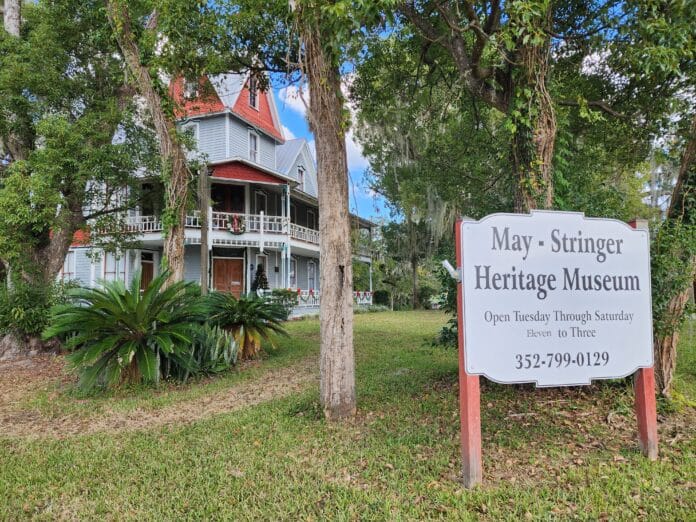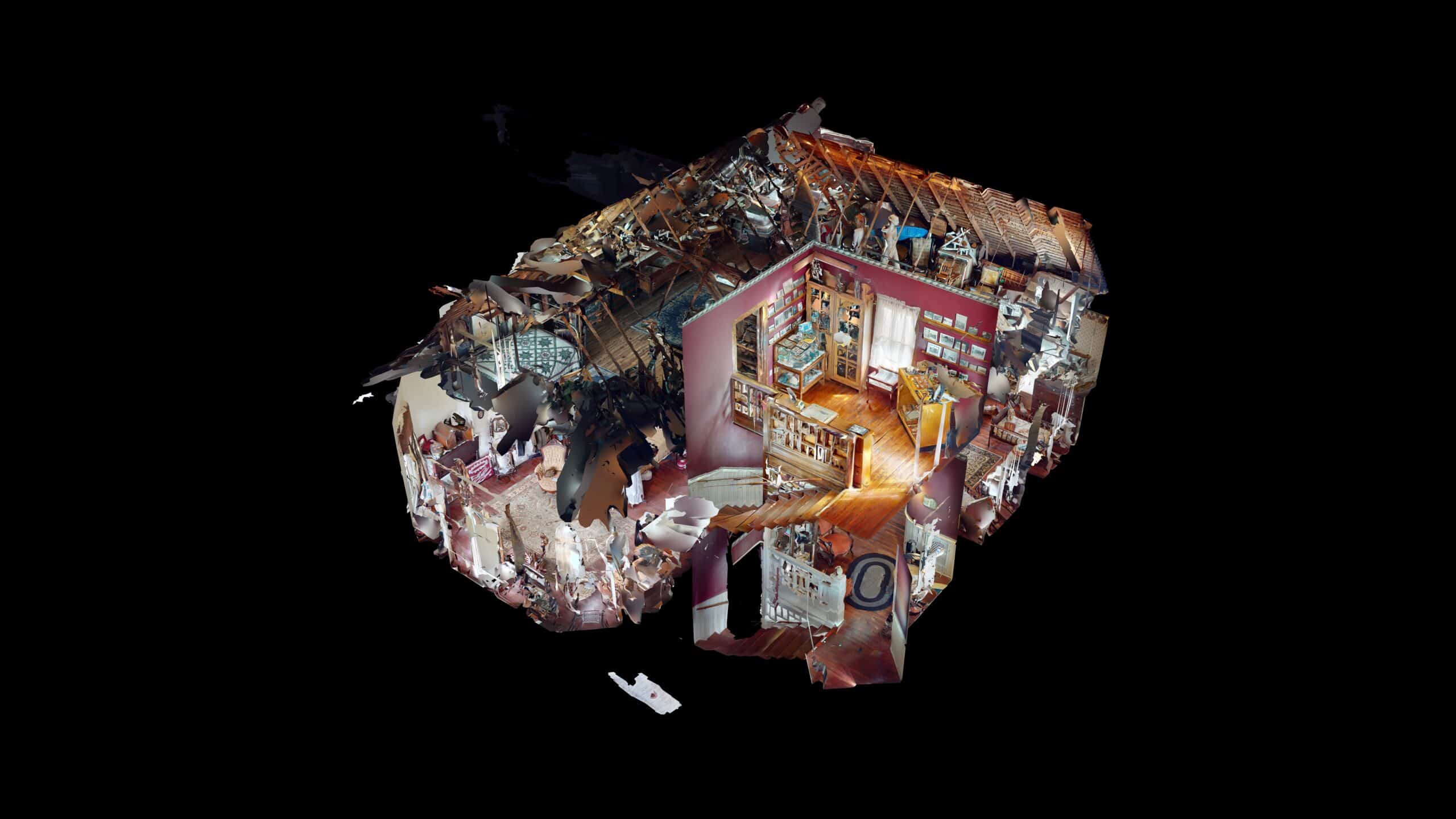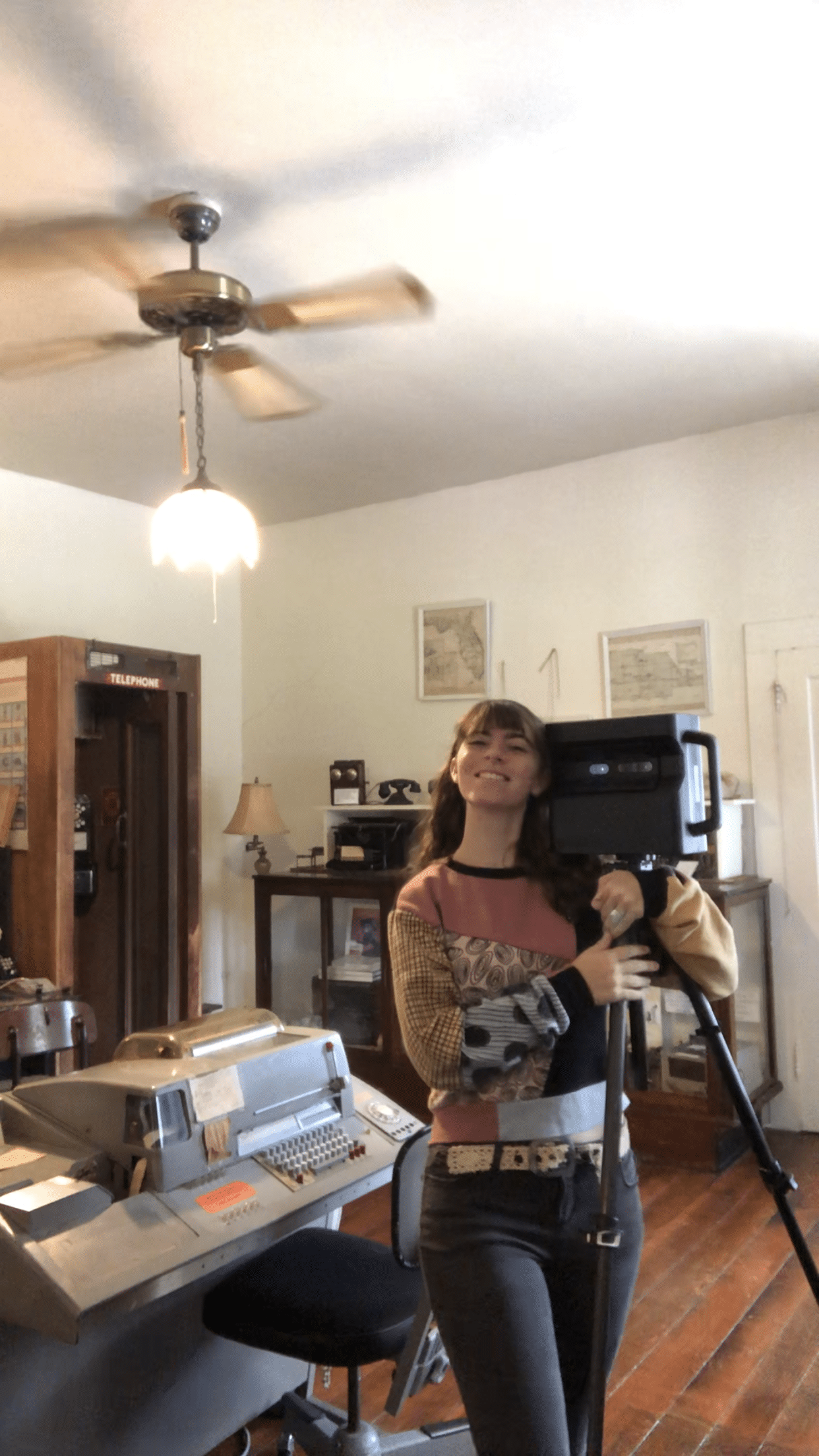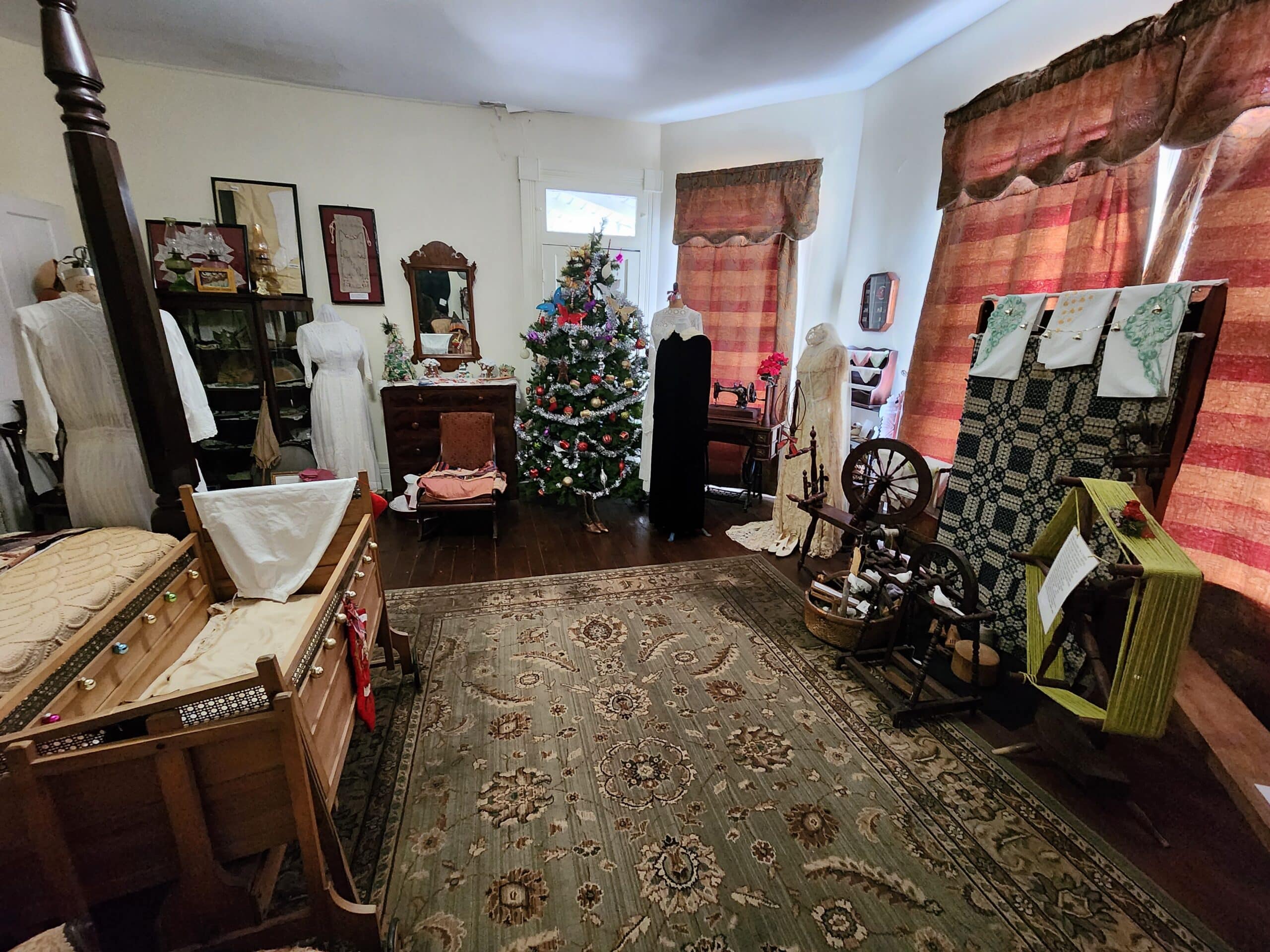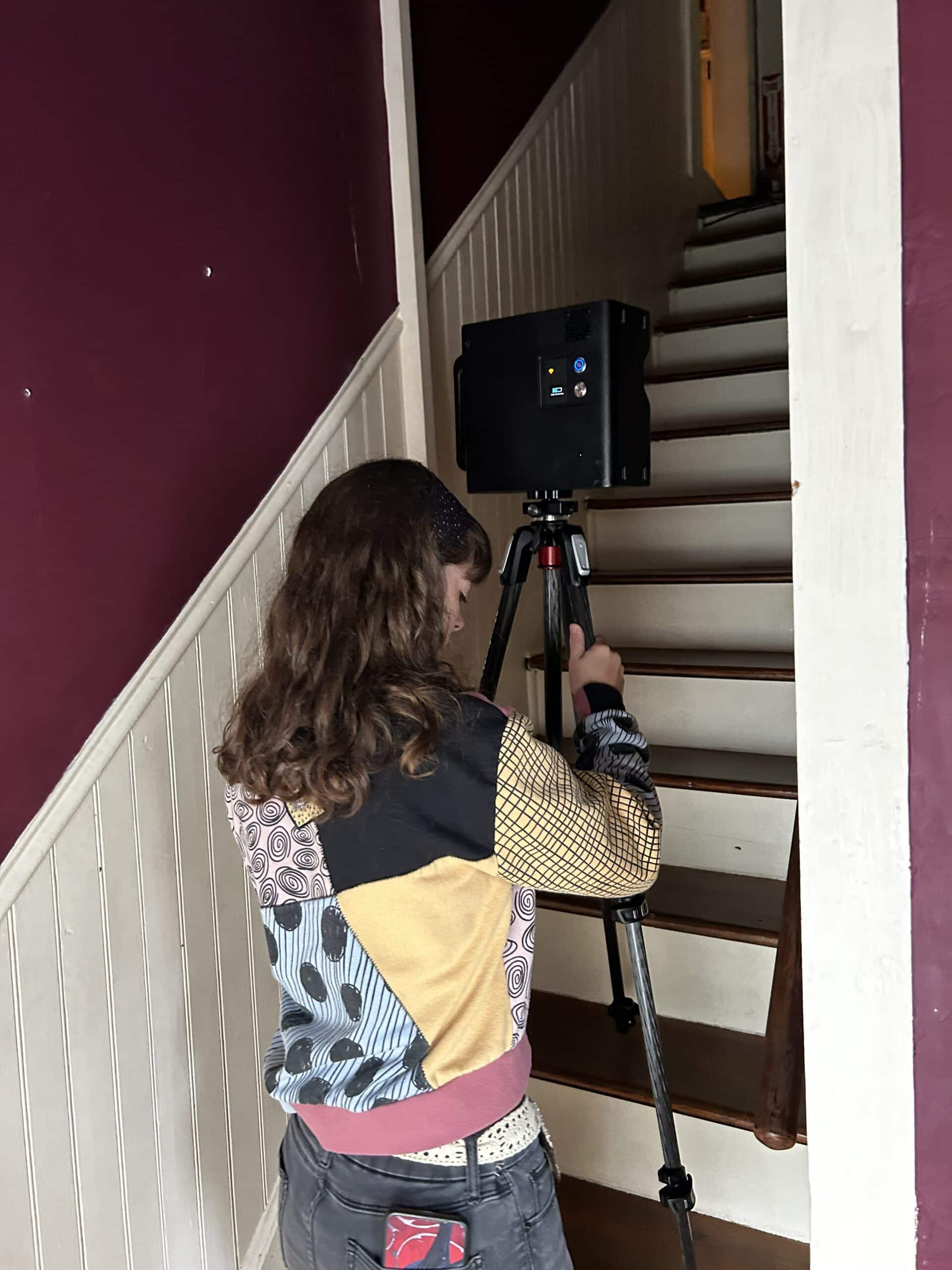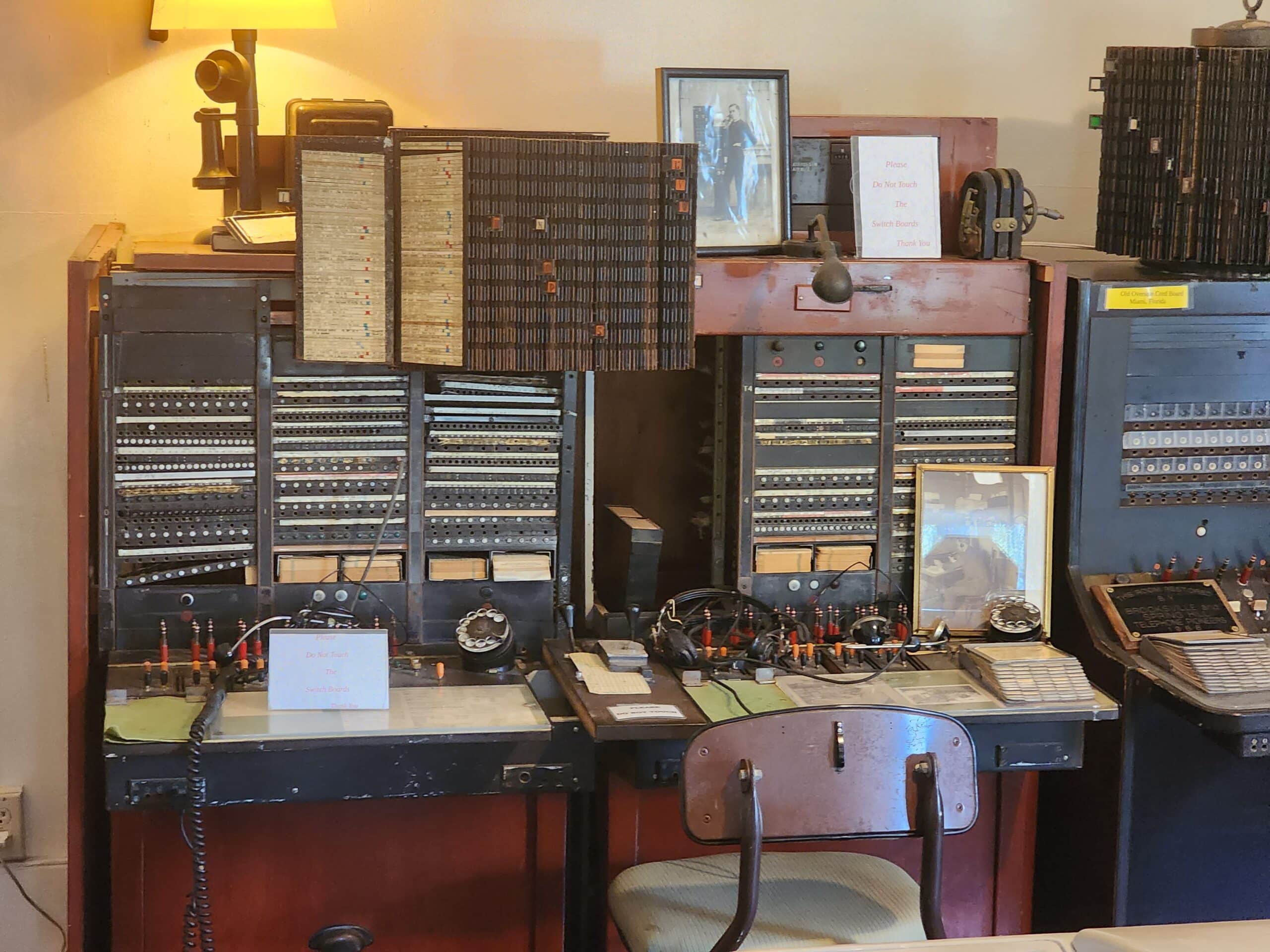On Oct. 12, 2023, Hannah Thieryung, a graduate student at the University of South Florida, began the creation of a new type of tour for the May-Stringer House. This involved the 3D scanning of the second and third floors of the historic May-Stringer House for those who wish to tour the building virtually, but why was this necessary?
Nestled in the heart of Brooksville, the May-Stringer House is often recognized as the most haunted home in Florida, but it is much more than that. It is a monument to Brooksville’s history and a window into the past. Unfortunately for many visitors, they have not had the opportunity to appreciate the building in its entirety.
The increasing difficulty that older volunteers and guests with disabilities have when attempting to ascend the stairways of the historic home has been a developing complication that has needed to be addressed. Barbara and Virginia, a pair of docents at the house, have volunteered their time guiding guests around the museum since the early 2000s. The two have expressed to Cheyenne Sowder, the Vice President of the Hernando Historical Museum Association and a fellow docent at May-Stringer, their sadness at being unable to tour the upper floors due to their inability to climb the stairs. “It’s always been heartbreaking because there’s so many beautiful things upstairs,” said Sowder.
Built around 1856 by John L. May, the house began its life as a simple four-room home for him and his family. After May died of tuberculosis in 1858, his wife, Marena, and his daughters, Matilda and Annie, continued to live on the property through the Civil War. Marena would remarry to a man named Frank Saxon before she died giving birth to her daughter, Jessie Mae, in 1869. Saxon later sold the property, and it found its way into the hands of Dr. Sheldon Stringer, who used the premises to practice medicine.
It would eventually be sold to the Hernando Historical Museum in 1980 by Dr. Earl Hensley and his wife, Helen. The “Painted Lady” Victorian-era home now exists as a four story, seven-gable, 14-room museum with gingerbread trim. It features “an elegant dining room, Victorian bedrooms, military room, an 1880s doctor’s office, and 1900s communication room,” according to the Historical Museum Association. With the house being on the national registry, it must maintain relative historical accuracy to how the home once looked.
Before the idea of 3D scanning the house was presented, Sowder and company were looking into other options: installing an elevator, making a PowerPoint presentation, or conducting video tours. The issues surrounding elevators were evident: they are prohibitively expensive, they could damage the home’s foundation, or they could disrupt the property’s historic status. While a PowerPoint would have likely been easier, it is unlikely it would have been able to capture the magic of the building in the same way. In this case, it was fortunate that the video tour kept getting “put on the back burner” for one reason or another because that led to the more in-depth scanning of the house with Hannah’s help.
“The 3D project, making it such a nice visual for our guests to have, we want to give them a touchscreen board base that they can come up to,” said Sowder. “We want it to be wheelchair accessible, of course, as well or have a chair that’s 24/7 so they can walk themselves through the house and see all the items.”
Having been a docent at the May-Stringer house for roughly two years, Hannah Thieryung currently attends USF as a first-year graduate student. During an internship at the college, she learned of a program called Access 3D which deals in public history, virtual history, and heritage tourism. The last of these involves the virtual scanning of historical sites like Egmont Key or, in this instance, the May-Stringer House.
“[Access 3D] will scan these sites and put them online on their site as an accessible option for tours, or they will go in privately and do this and it will be up to whatever institution is hosting the tour to do what they want with it,” Thieryung said. “Basically, it’s just a really good way to make a very high quality, very nice-looking virtual tour, which previously had not been an option because this is something that’s not financially affordable to everyone or to us.”
After Hannah completed her prior internship at the museum during her time as an undergraduate student at USF, she continued to volunteer because of her passion for the property. Upon returning to the university to earn her master’s degree, she began another internship in conjunction with the May-Stringer House. Since she lives in Brooksville and commutes to USF, it made perfect sense to intern through the museum again.
As part of Thieryung’s master’s degree, she is required to complete a capstone project. A large endeavor that signals the completion of a student’s coursework, a capstone is similar to a thesis but more hands-on in nature while attempting to solve real-world issues. Hannah was given leeway by her professors when choosing a topic for this project and the museum had a problem that she and other docents were acutely aware of. This gave rise to the idea of 3D scanning the entirety of the second and third floors to give those who are unable to view these areas a suitable alternative.
“The things upstairs are beautiful,” Sowder said. “They are intriguing, they are very interesting. Our curator tries to cycle things out, so the exhibits do change. So, we want to find a way to bring upstairs downstairs. We have over fourteen thousand items in the house, so it is a lot to miss.”

